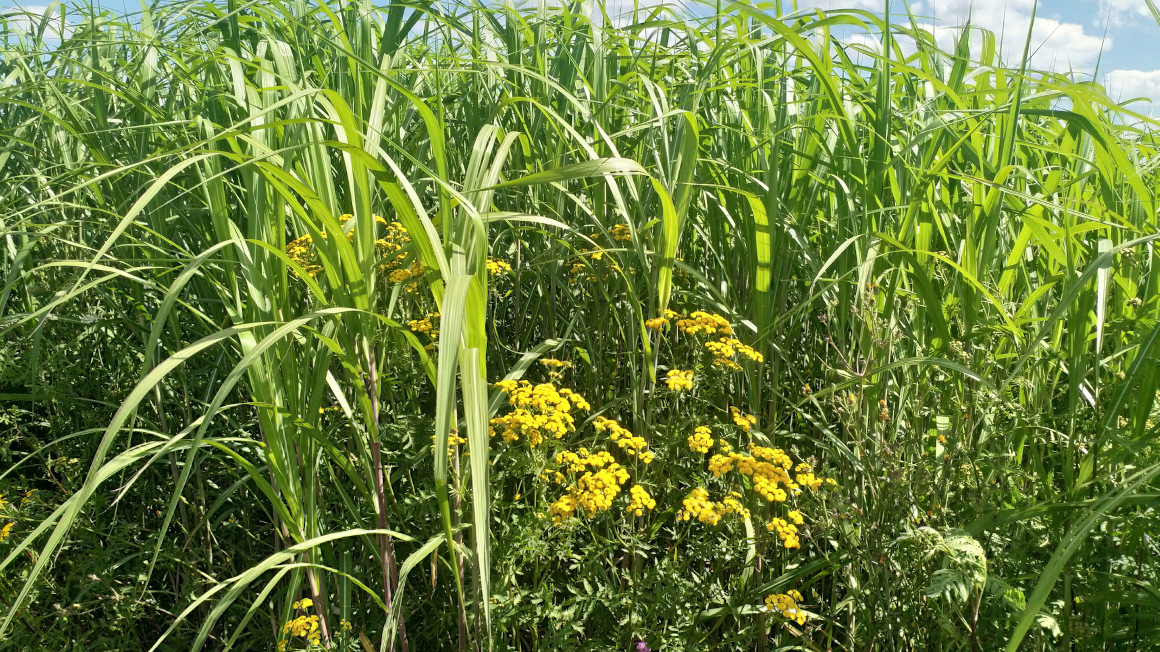It's all in the mix
The right mix of wildflowers and miscanthus grass in the field not only promotes biodiversity, it also makes energy production from Chinese reed more sustainable and efficient.

Known as Chinese reed, Miscanthus grass is a hardy and undemanding plant. Once introduced to the field, it grows for decades - even on contaminated and abandoned soils. The plant also produces a great amount of biomass, which is suitable for the production of sustainable chemicals or building and insulation materials, as well as for energy use. Such use of miscanthus for bioenergy production was the focus of a project involving researchers from the University of Hohenheim in Stuttgart, Forschungszentrum Jülich and Hunan Agricultural University in China. The team investigated the influence of cultivating certain native perennial wild plant species on the combustion properties and calorific value of miscanthus in energy production.
Positive effect for agricultural biodiversity
The study used feedstock samples of miscanthus as well as four native wild plant species that had already shown promise in preliminary studies for their biomass yield and flowering potential: tansy, mugwort, wild cardoon and yellow sweet clover. "Integrating these native flowering plants into perennial cropping systems for biomass production for energy use could have a positive impact on biodiversity and resilience in sustainable agricultural systems," says Moritz von Cossel, lead scientist of the study at the University of Hohenheim.
Increase efficiency and save costs
The study has now demonstrated that the admixture of wild plants in energy production actually has a positive effect. When 30% wild plants were added to the miscanthus biomass, the ash melting temperature increased significantly by 20% from 1,000 to 1,200 degrees Celsius. Compared to pure miscanthus, the admixture improved combustion properties and ash melting behavior - while maintaining similarly high calorific values of 16.3-17.5 megajoules per kilogram (MJ/kg). The heating value of wood pellets is 18 MJ/kg. "The mixture of wild plants and miscanthus improves the combustion quality. This leads to an increase in efficiency and a reduction in the cost of operating the plant," explains Nicolai David Jablonowski, co-author of the study from the Institute of Plant Sciences at Forschungszentrum Jülich.
Long-term study planned
The better ash melting behavior is explained by the higher proportion of calcium and magnesium in wild plants. Combustion with miscanthus ash components results in mixed phases, which in turn leads to a higher melting temperature than with pure miscanthus ash. In a next step, the researchers now want to show in long-term studies that the co-cultivation of miscanthus and wild plants on a larger scale not only promotes biodiversity in agriculture, but is also economical in terms of a holistic sustainable bioeconomy.
bb


